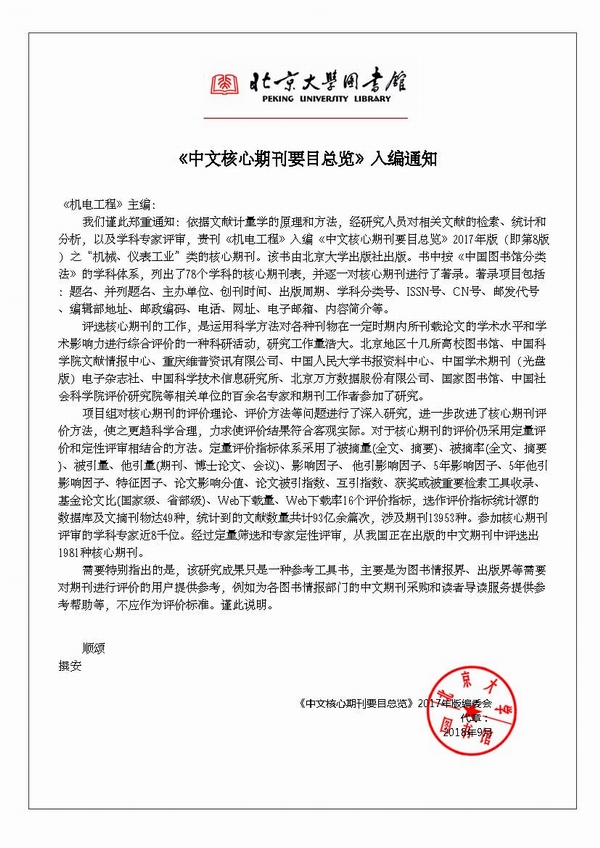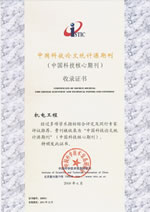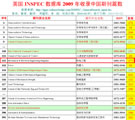
Founded in 1971 >
Chinese Sci-tech Core Periodicals >
British Science Abstracts (SA, INSPEC) Indexed Journals >
United States, Cambridge Scientific Abstract: Technology (CSA: T) Indexed Journals >
United States, Ulrich's Periodicals Directory(UPD)Indexed Journals >
United States, Cambridge Scientific Abstract: Natural Science (CSA: NS) Indexed Journals >
Poland ,Index of Copernicus(IC) Indexed Journals >
International Standard Serial Number:
ISSN 1001-4551
Sponsor:
Zhejiang University;
Zhejiang Machinery and Electrical Group
Edited by:
Editorial of Journal of Mechanical & Electrical Engineering
Chief Editor:
ZHAO Qun
Vice Chief Editor:
TANG ren-zhong,
LUO Xiang-yang
Tel:
86-571-87041360,87239525
Fax:
86-571-87239571
Add:
No.9 Gaoguannong,Daxue Road,Hangzhou,China
P.C:
310009
E-mail:
meem_contribute@163.com
Abstract: Aiming at the problem of difference of cooling effect for different connection between series and parallel cooling passages of motorized spindle, a study of flow, inlet outlet pressure differential and inlet outlet temperature differential was analyzed. Firstly, the value of heat source was calculated in common cutting conditions between the lathe and high-speed machining center of motorized spindle. Secondly, flow-pressure experiments were carried out based on the classical theory of fluid mechanics, which was used to calculate the flow-pressure curve of cooling machine. Furthermore, the resistance coefficient and the pressure loss along the way of PVC tube were obtained by these experiments. Thirdly, the fluid-structure interaction simulation modal was established to obtain the inlet outlet pressure differential; the actual flow value was calculated from the experimental data and finite element analysis. Finally, the actual flow value was used to the previous fluid-structure interaction simulation modal, inlet and outlet temperature difference was extracted from this fluid-structure interaction simulation modal results, which was substituted into the formula to symbolize the cooling effect. The results indicate that the series cooling passage of lathe motorized spindle is better than that of parallel, the reason is that the bearing part of the flow passage structure is simple, and the total flow between series and parallel difference is small, which lead to small difference of the motor part of heat absorption. Meanwhile, inlet and outlet temperature between series and parallel passage has small difference due to little calorific value of bearing part. Due to the flow through bearing cooling passage is higher than parallel cooling passage, the heat absorption of bearing cooling passage part for series cooling passage is higher than that of parallel. The parallel cooling passage of vertical machining center motorized spindle is better than that of the series, the reason is that the bearing part of the flow passage structure is complex, and the total flow of parallel cooling passage of vertical machining center motorized spindle is better than that of the series. Meanwhile, the outlet temperature of bearing and motor cooling passage parts within parallel passage is higher than that of the series due to high calorific value of bearing part. Hence the heat absorption of bearing cooling passage part for the parallel cooling passage is higher than that of series and the cooling effect is better.
Key words: motorized spindle; cooling structure; flow analysis; flowpressure output characteristics; flow passage structure design; fluid-structure interaction








